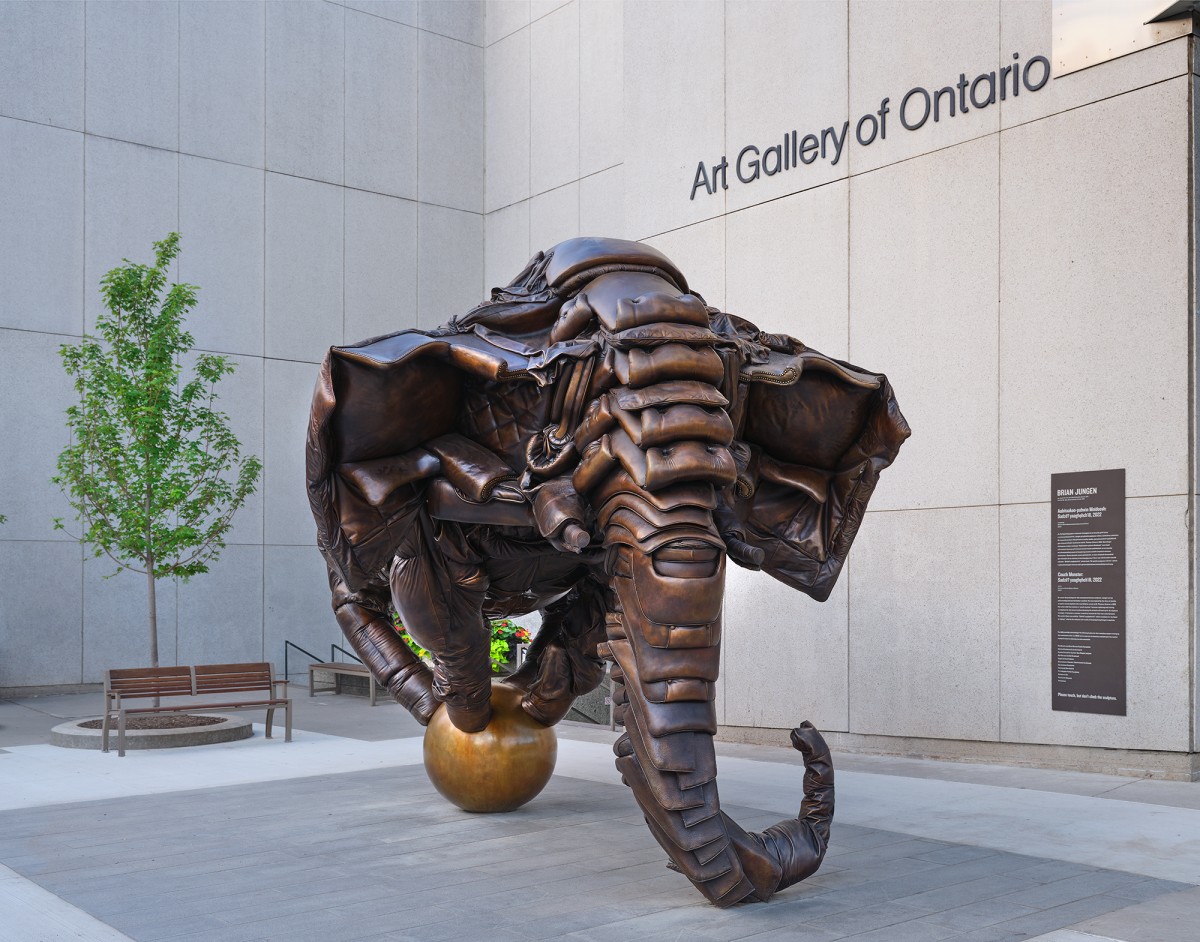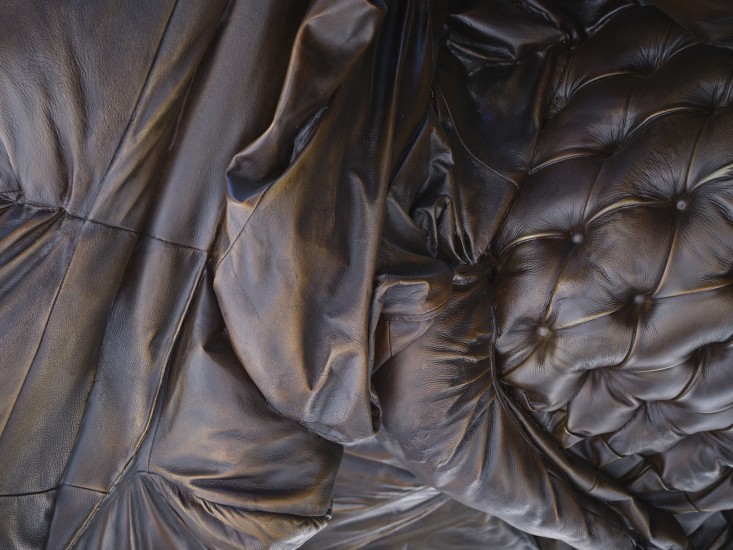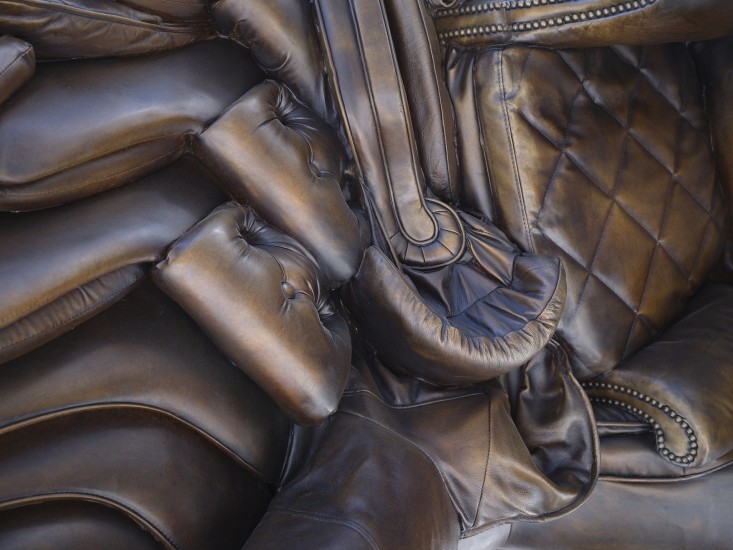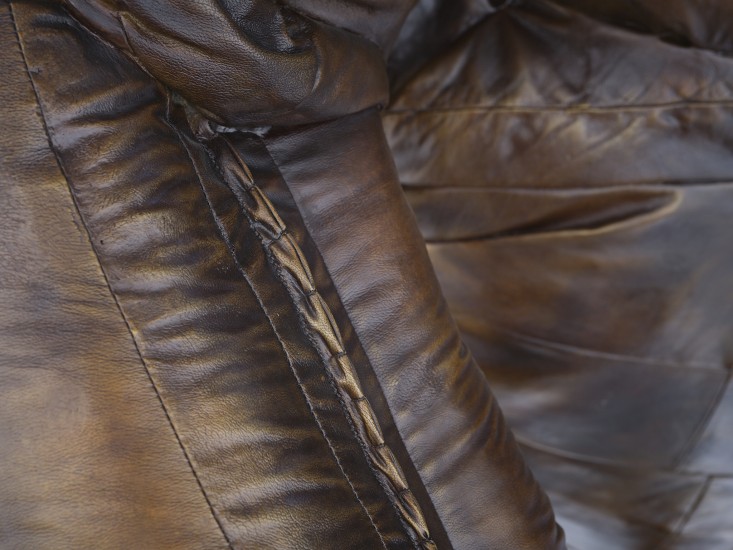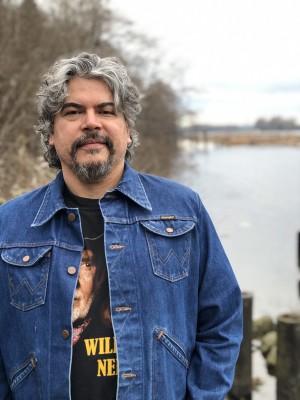ABOUT THE ARTIST
For more than two decades, Brian Jungen (b. 1970, Fort St. John, British Columbia; lives/works: Northern BC, Treaty 8 territory) has been lauded for his ability to transform everyday commercial products into a range of museological objects. His sculptures and installations imitate forms as large as the skeleton of a whale, composed of plastic chairs, as well as Indigenous ceremonial objects such as masks produced from dissected and reconfigured Nike Air Jordan trainers. These works address the issues of dispossession and appropriation latent in the aesthetics of contemporary global economic, political, and cultural conflict.
Jungen has presented significant solo exhibitions at the Hammer Museum, Los Angeles (2021); Art Gallery of Ontario, Toronto (2019, 2011); Henry Art Gallery, Seattle (2017); Kunstverein Hannover, Germany (2013); Bonner Kunstverein, Germany (2013); National Museum of the American Indian, Washington (2009); Museum Villa Stuck, Munich (2007); Tate Modern, London (2006); Vancouver Art Gallery (2006); Witte de With, Rotterdam (2006); and New Museum, New York (2005). Modest Livelihood, a collaborative work with Duane Linklater, has been shown at the Institute of Modern Art, Brisbane (2019); Edinburgh Art Festival (2014); Art Gallery of Ontario, Toronto (2013); and Walter Phillips Gallery, Banff Centre, in collaboration with dOCUMENTA (13) (2012).
Jungen’s work has been included in recent group exhibitions at the Toronto Biennial of Art (2022); FOR-SITE Foundation, San Francisco (2021); Copenhagen Contemporary, (2021); Crystal Bridges Museum of American Art, Bentonville (2018); Liverpool Biennial (2018); Institute of American Indian Arts, Santa Fe (2017); National Gallery of Canada, Ottawa (2017, 2013); De Paul Art Museum, Chicago (2016); Vancouver Art Gallery (2016); and the 9th Shanghai Biennale (2012). In 2002, he won the inaugural Sobey Art Award and the Gershon Iskowitz Prize in 2010. Jungen is a graduate of the Emily Carr College of Art and Design.
À PROPOS DE L'ARTISTE
Depuis plus de deux décennies, Brian Jungen (né en 1970 à Fort St. John, Colombie-Britannique; vit et travaille à Nord de la C.-B., territoire du Traité 8) a été loué pour sa capacité à transformer des produits commerciaux de tous les jours en une gamme d'objets muséologiques. Ses sculptures et ses installations imitent des formes aussi imposantes que le squelette d'une baleine, composé de chaises en plastique, ainsi que des objets cérémoniels autochtones, tels des masques fabriqués à partir de baskets Nike Air Jordan disséquées et reconfigurées. Ces œuvres traitent des questions de dépossession et d'appropriation latentes dans l'esthétique des conflits économiques, politiques et culturels mondiaux contemporains.
Jungen a présenté d’importantes expositions personnelles au Hammer Museum, Los Angeles (2021); au Musée des beaux-arts de l’Ontario, Toronto (2019, 2011); à la Henry Art Gallery, Seattle (2017); au Kunstverein Hannover, Allemagne (2013); au Bonner Kunstverein, Allemagne (2013); au National Museum of the American Indian, Washington (2009); au Museum Villa Stuck, Munich (2007); à la Tate Modern, Londres (2006); à la Vancouver Art Gallery (2006); au Witte de With, Rotterdam (2006), et au New Museum, New York (2005). Modest Livelihood, une œuvre réalisée en collaboration avec Duane Linklater, a été présentée à l’Institute of Modern Art, Brisbane (2019); à l’Edinburgh Art Festival (2014); au Musée des beaux-arts de l’Ontario, Toronto (2013), et à la Walter Phillips Gallery du Banff Centre, en collaboration avec la dOCUMENTA (13), Cassel (2012).
Le travail de Jungen a été inclus dans des expositions de groupe récentes à la Toronto Biennial of Art (2022); à la FOR-SITE Foundation, San Francisco (2021); au Copenhagen Contemporary, (2021); au Crystal Bridges Museum of American Art, Bentonville (2018); à la Liverpool Biennial (2018); à l’Institute of American Indian Arts, Santa Fe (2017); au Musée des beaux-arts du Canada, Ottawa (2017, 2013); au De Paul Art Museum, Chicago (2016); à la Vancouver Art Gallery (2016), et à la 9e Biennale de Shanghai (2012). En 2002, il a été lauréat du premier prix Sobey pour les arts et a reçu le prix Gershon Iskowitz en 2010. Jungen est diplômé de l’Emily Carr College of Art and Design.
